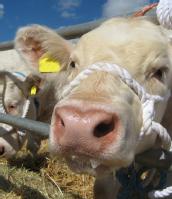Life Sciences News
See our Latest Journal Publications
Two domestications for grapes
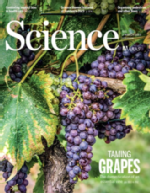 Professor Robin Allaby gives his perspective in Science, on the evolutionary events that led to grape domestication. The article made the front cover.
Professor Robin Allaby gives his perspective in Science, on the evolutionary events that led to grape domestication. The article made the front cover.
Read the paper (3 March 2023)
Warwick included in ancient DNA compilation celebrating Nobel Prize
 Nature Portfolio has compiled a collection of key ancient DNA papers in celebration of the Nobel Prize in Physiology or Medicine award to the field’s principal pioneer, Svante Pääbo, which includes the work of Professor Robin Allaby published in Nature Reviews Methods Primers. The paper outlines the best current methodological approaches to the field, the wide range of applications possible and ethics involved. The primer is freely available for a month.
Nature Portfolio has compiled a collection of key ancient DNA papers in celebration of the Nobel Prize in Physiology or Medicine award to the field’s principal pioneer, Svante Pääbo, which includes the work of Professor Robin Allaby published in Nature Reviews Methods Primers. The paper outlines the best current methodological approaches to the field, the wide range of applications possible and ethics involved. The primer is freely available for a month.
The Nobel Prize was awarded in particular for the discoveries concerning the genomes of extinct hominins and human evolution which has dramatically changed how we understand human evolution and contributes to our understanding of modern-day human physiology. At Warwick, Professor Allaby has applied ancient DNA to past genomes of crop plants which is rewriting our understanding of domestication, recently reviewed in Trends in Ecology and Evolution.
Scientists develop a new non-opioid pain killer with fewer side effects
 A promising new non-opioid painkiller (analgesic) with potentially fewer side effects compared to other potent painkillers, has been discovered.
A promising new non-opioid painkiller (analgesic) with potentially fewer side effects compared to other potent painkillers, has been discovered.
A team of scientists, co-led by researchers from the School of Life Sciences, has investigated a compound called BnOCPA (benzyloxy-cyclopentyladenosine), found to be a potent and selective analgesic which is non-addictive in test model systems. BnOCPA also has a unique mode of action and potentially opens a new pipeline for the development of new analgesic drugs.
Press Release (20 July 2022)
Consider farmers at individual level when controlling livestock disease outbreaks, researchers say
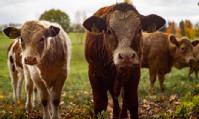 Livestock diseases will be better managed by incorporating the behaviours of individual farmers into national infection control policies, according to new research.
Livestock diseases will be better managed by incorporating the behaviours of individual farmers into national infection control policies, according to new research.
The findings are the latest from the BBSRC-funded Farmer-led Epidemic and Endemic Disease-management (FEED) project, an interdisciplinary research group including epidemiologists, mathematical modellers, behavioural scientists and veterinarians from the Universities of Warwick and Nottingham. The research is published this week, in the journal PLOS Computational Biology, in a paper entitled “Modelling livestock infectious disease control policy under differing social perspectives on vaccination behaviour”.
Press Release (15 July 2022)
New insights into how cyanobacteria regulate zinc uptake in the open ocean
Marine cyanobacteria (blue-green algae) are major contributors to the global carbon cycle and are the basis of the food web in many of the world’s oceans. They only require sunlight, carbon dioxide, plus a panel of essential elements, including metals, to sustain life. However, little is known about whether and how cyanobacteria utilize or regulate zinc, an element often considered to be essential to life.
An interdisciplinary research team including Professor Dave Scanlan and Dr Alevtina Mikhaylina, has identified a remarkably efficient regulatory network that controls zinc accumulation in the open ocean cyanobacterium Synechococcus.
Press Release (9 June 2022)
Warwick researchers identify novel cellular process that helps us understand the mechanisms of ageing-related diseases
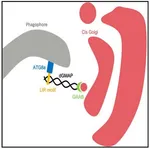 A team of researchers led by Professor Ioannis Nezis has identified the molecular and cellular mechanisms that regulate selective autophagy in the fruit fly Drosophila melanogaster.
A team of researchers led by Professor Ioannis Nezis has identified the molecular and cellular mechanisms that regulate selective autophagy in the fruit fly Drosophila melanogaster.
Press Release (31 May 2022)
Compounds made from ‘digested’ molecules feeds appetite for greener pharmaceuticals and agrochemicals
A method of producing vital chemical building blocks for use in the pharmaceutical and agrochemical industries that mimics how plants manufacture them has been developed by a team at the Warwick Integrative Synthetic Biology Centre. The new method uses enzymes to produce indolic amides, carboxylic acids and auxins – vital for use in pharmaceutical and agrochemical industries.
Press Release (1 February 2022)
New research giving insight into the persistence of highly contagious foot-and-mouth disease virus features on front cover of Science Magazine
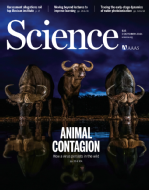 A major new study, featured on the cover of ScienceLink opens in a new window Magazine today (1 October 2021), undertaken by Dr Erin Gorsich and colleagues at The Pirbright Institute, Oregon State University, Onderstepoort Veterinary Institute and SANParks, Veterinary Wildlife Services, Kruger National Park explores the mechanisms at play that enable the persistence of highly infectious pathogens in their host populations, a major problem in endemic disease ecology.
A major new study, featured on the cover of ScienceLink opens in a new window Magazine today (1 October 2021), undertaken by Dr Erin Gorsich and colleagues at The Pirbright Institute, Oregon State University, Onderstepoort Veterinary Institute and SANParks, Veterinary Wildlife Services, Kruger National Park explores the mechanisms at play that enable the persistence of highly infectious pathogens in their host populations, a major problem in endemic disease ecology.
Press release (1 October 2021)
Starving Tuberculosis (TB) of sugars may be a new way to fight it
Tuberculosis is a devastating disease that claims over 1.5 million lives each year. The increase in TB cases that are resistant to the current antibiotics means that novel drugs to kill Mycobacterium tuberculosis (Mtb) are urgently needed. Dr Elizabeth Fullam and colleagues have successfully discovered how Mycobacterium tuberculosis uses an essential sugar called trehalose, which provides a platform to design new and improved TB drugs and diagnostic agents.
Press Release (15 April 2021)
Soil bacteria hormone discovery provides fertile ground for new antibiotics
 Research by Dr Chris Corre and colleagues could lead to improved manufacturing of existing antibiotics, and open up opportunities to discover new ones.
Research by Dr Chris Corre and colleagues could lead to improved manufacturing of existing antibiotics, and open up opportunities to discover new ones.
Press ReleaseLink opens in a new window (3 Feb 2021)
Chemical memory in plants affects chances of offspring survival
Professor Jose Gutierrez-Marcos and an international team of researchers have uncovered the mechanism that allows plants to pass on their ‘memories’ to offspring, which results in growth and developmental defects.
Press Release (1 December 2020)
Understanding lung infections in patients with cystic fibrosis
For young people with cystic fibrosis, lung infection with Staphylococcus aureus, MRSA, is common and is treated with antibiotics in the hope that this will prevent a decline in lung function. However there has recently been debate over the role S. aureus plays in CF lung disease. Dr Esther Sweeney, Dr Freya Harrison and colleagues have used a new model of CF lungs which could be used to make better decisions about future use of antibiotics.
Press Release (19 November 2020)
Scientists develop genetic ‘monitors’ that detect when genes are active
New genetic sensors, developed by Professor Alfonso Jaramillo and colleagues, could function as a lab test device and even as a live monitoring system inside living cells.
Press Release (26 October 2020)
Precautionary Breaks: planned, limited duration circuit breaks to control the prevalence of COVID-19
Cases of COVID-19 are rising exponentially in almost all regions of the country, with some areas experiencing extremely high levels of infection - new research involving University of Warwick researchers has found. Against this backdrop of rising cases, their paper examines the impact of a short 2-week period of intense control.
Press Release (14 October 2020)
Breakthrough in studying ancient DNA from Doggerland that separates the UK from Europe
Professor Robin Allaby and colleagues have achieved a number of innovative breakthroughs in analysing sedimentary ancient DNA to reconstruct an 8,150 year old environmental catastrophe in an area that is now covered by the North Sea.
Press Release(16 July 2020)
Man’s impact on flax evolution more limited than thought
 Flax naturally adapted to new environments rather than by human influence due to a set of genes that enable it to change its architecture according to research led by Professor Robin Allaby.
Flax naturally adapted to new environments rather than by human influence due to a set of genes that enable it to change its architecture according to research led by Professor Robin Allaby.
Real-time foot-and-mouth strategy to better fight disease
Odd genetics of a tri-sexual worm
In a recent paper published in Current Biology, Dr Andre Pires da Silva and colleagues describe a species of nematode that has three sexes - male, female and hermaphrodite. Auanema rhodensis, the worm featured in the study, uses an unusual reproductive strategy with only one sex chromosome (X). Hermaphrodites and female worms have two X chromosomes; males have just one X chromosome. Researchers found that some hermaphroditic worms will produce sperm with two X chromosomes and eggs with no chromosomes. When the hermaphroditic worms and male worms mate, only more male worms are produced. One possible explanation is that male worms may be important for the species' genetic diversity, providing A. rhodensis with the ability to adapt to changing conditions more efficiently than other species.
- Read paper: Sex- and Gamete-Specific Patterns of X Chromosome Segregation in a Trioecious Nematode Current Biology, Vol 28, Issue 1 p93-99e
- Interview in Newsweek
A Critical Reflection on the 28th International Biology Olympiad
 The 28th International Biology Olympiad (IBO) took place at the University of Warwick between 23 – 30 July 2017 with 264 international competitors (aged 14 – 18) competing in a series of practical and theoretical exams devised by School of Life Sciences staff and colleagues from the Royal Society of Biology.
The 28th International Biology Olympiad (IBO) took place at the University of Warwick between 23 – 30 July 2017 with 264 international competitors (aged 14 – 18) competing in a series of practical and theoretical exams devised by School of Life Sciences staff and colleagues from the Royal Society of Biology.
Branagh Crealock-Ashurst, our Student Experience and Outreach Assistant, has written a critical reflection on the IBO from how the event was logistically organised to a semi-statistical analysis of the overall results of the competition and what they meant in terms of the pedagogical approach to examination. The paper entitled 'A Critical Reflection on the 28th International Biology Olympiad' was published in the October issue of Exchanges: the Warwick Research Journal (available at http://exchanges.warwick.ac.uk/article/view/221).
Foot-and-mouth crises to be averted with vaccination strategy
 Research by Dr Mike Tildesley and colleagues shows foot-and-mouth epidemics could be controlled quickly and effectively by rapidly establishing how many animals can be vaccinated per day of an outbreak.
Research by Dr Mike Tildesley and colleagues shows foot-and-mouth epidemics could be controlled quickly and effectively by rapidly establishing how many animals can be vaccinated per day of an outbreak.
Read Press Release

